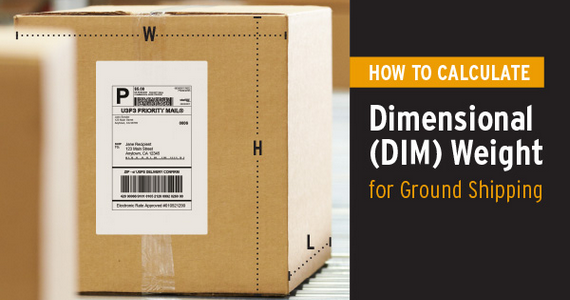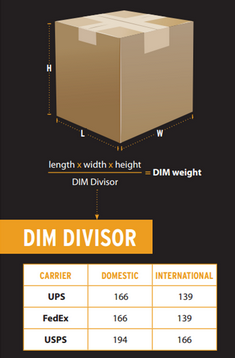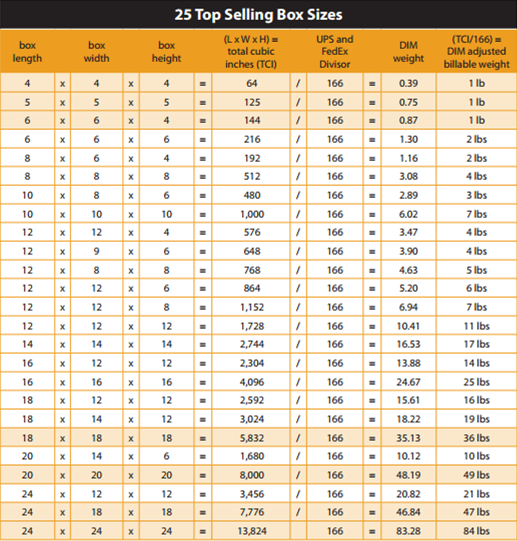 If you sell large-but-light items or tend to use extra-large boxes for your shipments, you need to know about dimensional (DIM) weight – shipping rate based on package size, not weight – and how UPS Ground and FedEx Ground have modified their shipping rates in 2015 in accordance with DIM weight pricing.
If you sell large-but-light items or tend to use extra-large boxes for your shipments, you need to know about dimensional (DIM) weight – shipping rate based on package size, not weight – and how UPS Ground and FedEx Ground have modified their shipping rates in 2015 in accordance with DIM weight pricing.
What is DIM Weight?
Because space on delivery trucks is at a premium, shipping carriers like to keep their own costs as low as possible by loading trucks with as many packages as possible. With traditional weight-based pricing, a truck filled to the ceiling with boxes of pillows would generate considerably less revenue than a truck filled with boxes of heavy shoes. DIM was designed to help shippers cover costs and encourage sellers to look at lighter and more cost-effective packaging options.
How Is DIM Weight Calculated?
Let’s say you’re shipping a 1-pound package via UPS Ground.
• First, determine the package’s size in cubic inches by multiplying length x width x height; for a 12”x12”x18” box (a commonly used box size), that’s 1,154 cubic inches.
• Next, divide the cubic inches by the DIM Divisor set by each carrier, which for UPS is 166 (see the table on right): 1,152/166 comes to 6.93 pounds, which rounds up to 7 pounds.
• Finally, determine the shipping rate by checking if the DIM weight is greater than the actual weight of the package. Using the example above, if you are shipping a 1 lb. package with pillows, you’ll still have to ship using the DIM weight of 7 lbs., not the actual weight of the package which is 1 lb.
DIM Weight Table for Common Box Sizes
The table below shows the DIM adjusted billable weight for 25 popular box sizes, commonly used by sellers to ship their products in. UPS Ground Rates include a 15% volume discount off Standard List Rates, a 6.50% fuel surcharge and a $3.10 residential surcharge.
How Can I Reduce DIM Costs?
To avoid paying extra for DIM pricing, here are a few tips for e-commerce sellers to keep in mind before shipping.
• Choose a just-right box. Don’t pay extra to ship air; a sturdy box in a smaller size with the appropriate fillers can save you money.
• Try envelopes. If your product can fit securely and safely in an envelope, consider durable, weatherproof options like Tyvek and poly envelopes.
• Take a closer look at your carrier agreement. If your carrier intends to charge for DIM, think about renegotiating certain terms of your contract, such as DIM Divisor or Net Minimum Value.
The Bottom Line
When it comes to shipping, size matters – perhaps now more than ever before. Check out Stamps.com’s helpful guide on calculating DIM Weight in 2015 and tips to reduce DIM costs.






